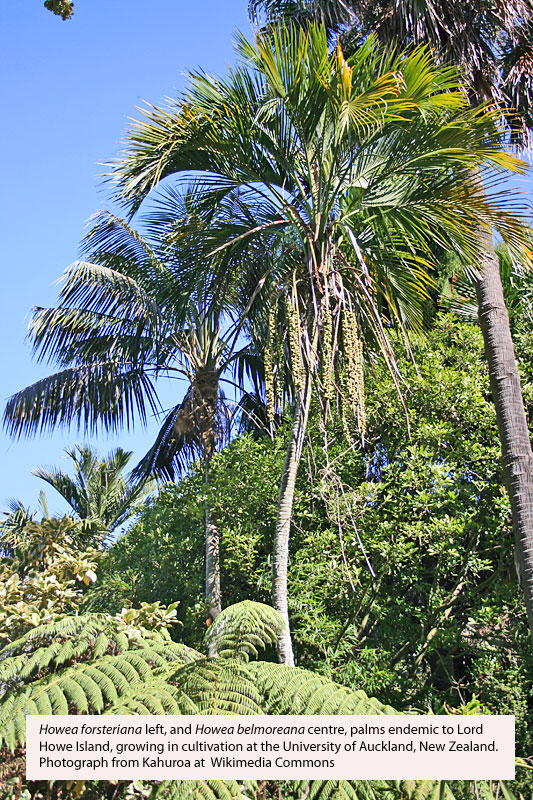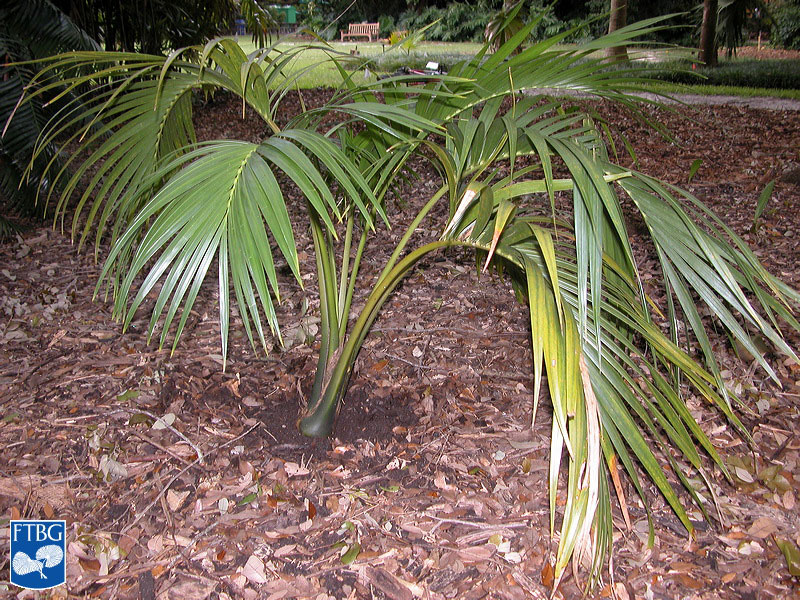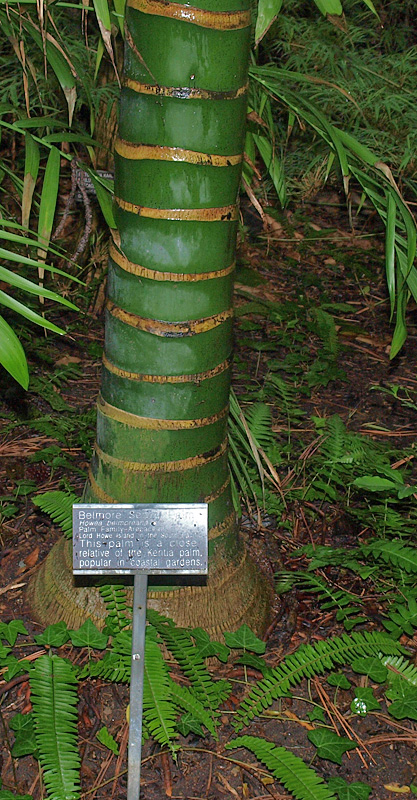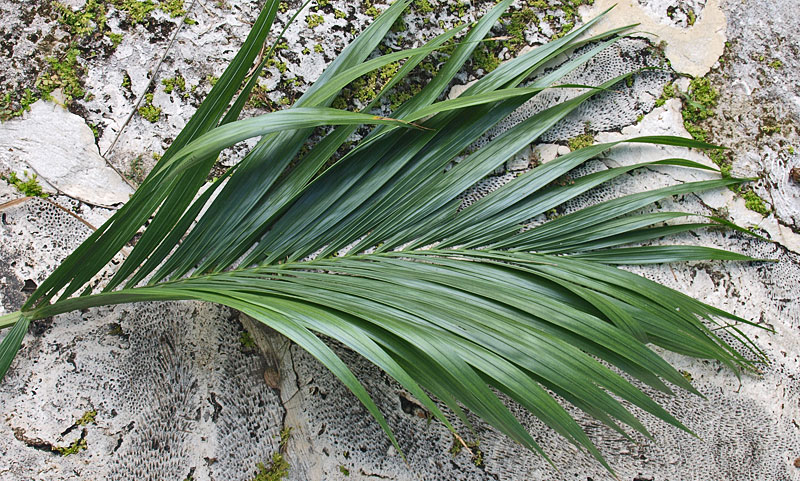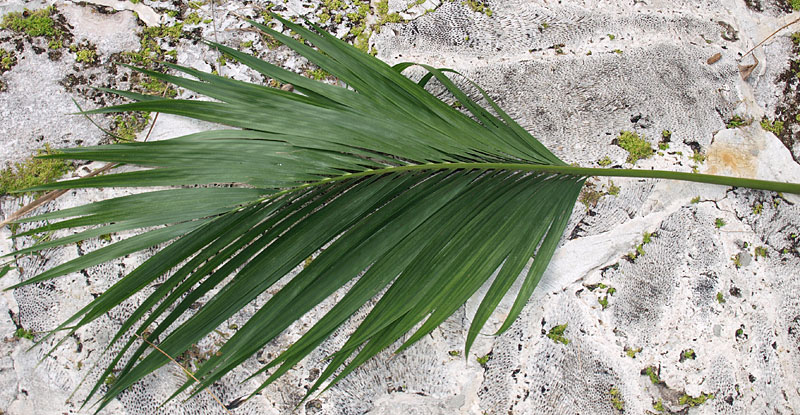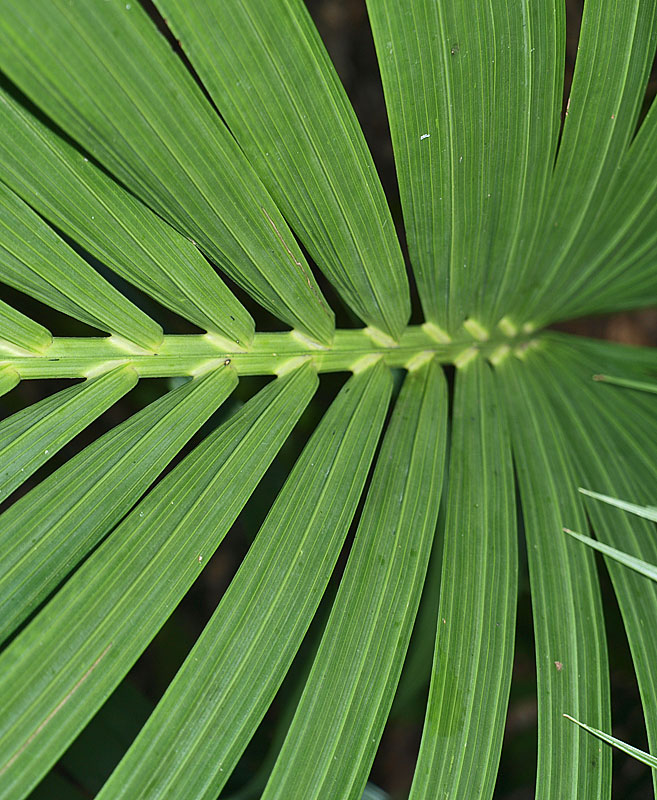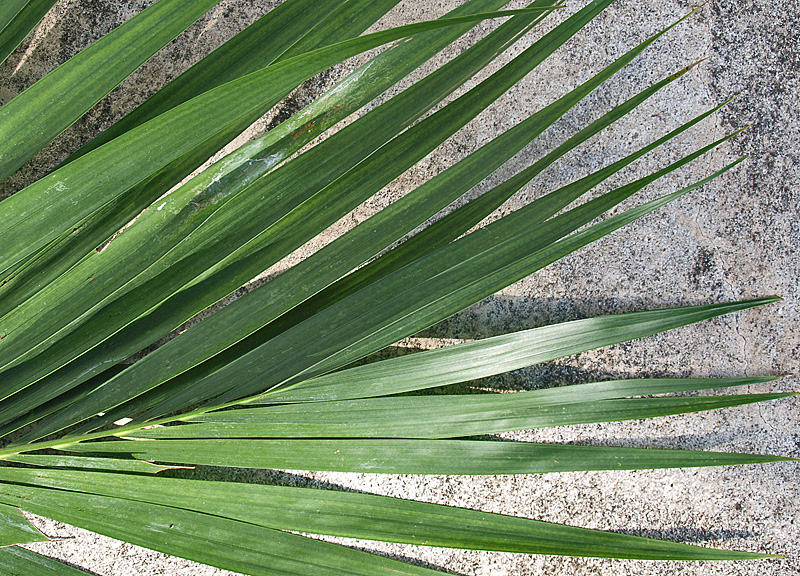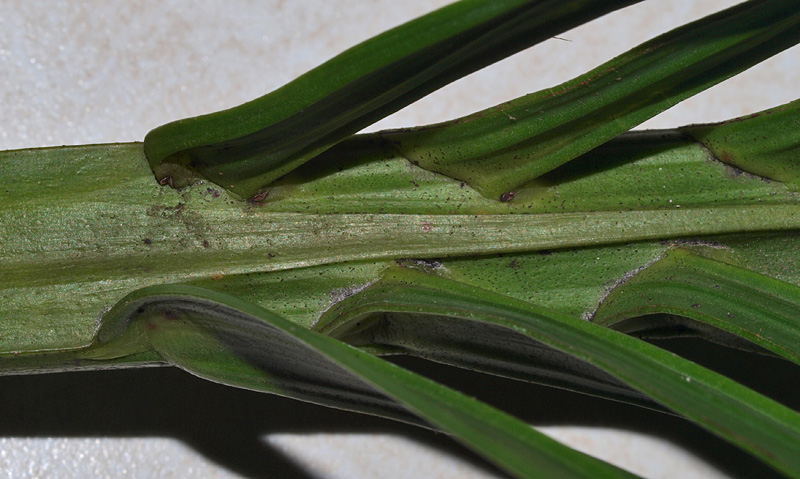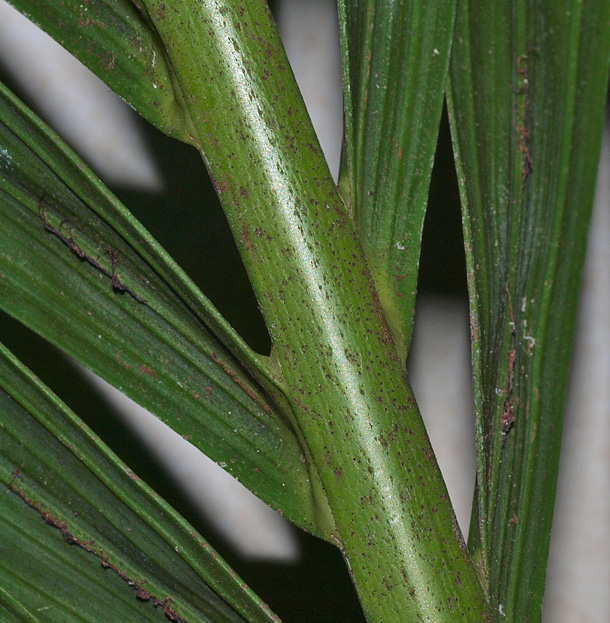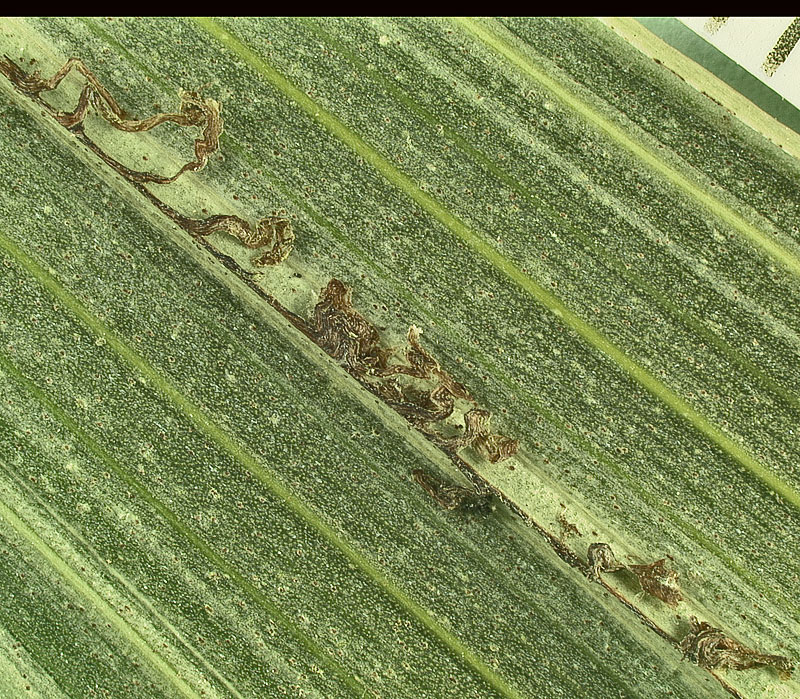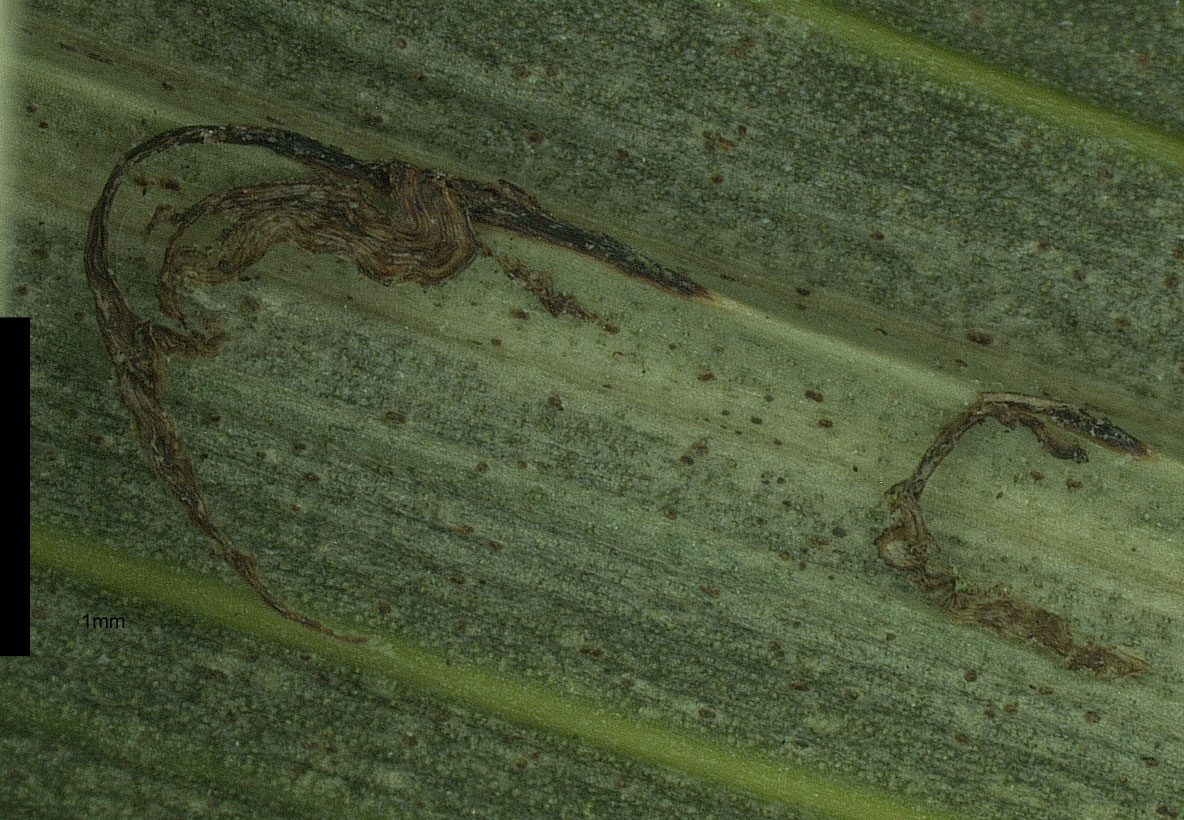Howea belmoreana
|
Howea forsteriana left, and Howea belmoreana center, with pendulous inflorescence spikes. Photograph courtesy of Kahuroa. Retrieved from "http://commons.wikimedia.org/wiki/File:Howea-2-species.jpg" |
|
Howea belmoreana young palm. Photograph courtesy of Fairchild Tropical Botanical Garden, Guide to Palms http://palmguide.org/index.php |
|
Howea belmoreana young stem with leaf scars |
|
Howea belmoreana leaf upper surface |
|
Howea belmoreana leaf lower surface |
|
Howea belmoreana rachis |
|
Howea belmoreana leaflet tips |
|
Howea belmoreana basal leaflet attachment |
|
Howea belmoreana rachis and tan ramenta on leaflet under surface |
|
Howea belmoreana tan ramenta on leaflet under surface (mm scale) |
|
Howea belmoreana close view of tan ramenta on leaflet under surface (mm scale) |
Common name
belmore sentry palm, kentia palm
Description
Stems: Solitary, erect to 10 m tall and 15 cm in diameter, bulging at the base; young stems green, turning gray with age; ring scars are prominent, raised, and undulating. Leaves: Pinnatepinnate:
like a feather; palms with pinnate leaves usually have compound leaflets attached to a rachis, although a pinnate leaf may be entire with pinnate veins (e.g., <em>Chamaedorea metallica</em>)
, reduplicatereduplicate:
Most palm leaflets or leaf segments are obviously folded. If the folds create an upside-down V-shape, with the margins lower than the midrib (so that rain might "run off the roof"), the folding is reduplicate.
, strongly arching, to 3 m long, with linearlinear:
term to describe leaves and leaflets that are narrow with nearly parallel margins; like a line
, green leaflets regularly arranged in a single plane, held in a V-shape at about 45° to the rachisrachis:
an extension of the petiole through the blade of a pinnate leaf to which leaflets are attached
. The leafleaf:
in palms -- the leaf blade (which is usually divided into leaflets or leaf segments), the petiole (or leaf stalk) and the sheath (which forms the attachment of the leaf to the stem)
sheaths disintegrate into a mass of fibers with age. Flowers and fruit: Inflorescences are pendulous spikes, to 1.5 m long, with a single inflorescenceinflorescence:
the reproductive structure of a flowering plant, including palms, consisting of flowers and associated bracts
growing from the leafleaf:
in palms -- the leaf blade (which is usually divided into leaflets or leaf segments), the petiole (or leaf stalk) and the sheath (which forms the attachment of the leaf to the stem)
axil. Staminatestaminate:
a flower bearing stamens but no pistils; a “male” flower
and pistillatepistillate:
a flower bearing a pistil but no stamens; a “female” flower
flowers are produced on the same inflorescences and are white in color. Fruits are up to 4-5 cm long, ovoid and red or reddish-brown when ripe.
Diagnostic features
Field: Solitary, erect palms with oblique ring scars on green stems, strongly arching pinnatepinnate:
like a feather; palms with pinnate leaves usually have compound leaflets attached to a rachis, although a pinnate leaf may be entire with pinnate veins (e.g., <em>Chamaedorea metallica</em>)
leaves, medium green leaflets (above and below) with prominent secondary veins, and drooping inflorescenceinflorescence:
the reproductive structure of a flowering plant, including palms, consisting of flowers and associated bracts
spikes
Lab: Small scales the abaxialabaxial:
away from or the side of an organ facing away from the axis (<strong>ab </strong>as in <strong>ab</strong>andon); for example, the lower surface of a leaf blade or petiole
leaflet surface and tan ramentaramenta:
irregularly shaped, thin scales, sometimes found along the abaxial midrib of a leaflet
along midrib
May be confused with
Howea forsteriana which is much larger at maturity and has drooping leaflets and multiple inflorescenceinflorescence:
the reproductive structure of a flowering plant, including palms, consisting of flowers and associated bracts
spikes from a single leafleaf:
in palms -- the leaf blade (which is usually divided into leaflets or leaf segments), the petiole (or leaf stalk) and the sheath (which forms the attachment of the leaf to the stem)
axis
Distribution
Native to Lord Howe Island
Additional comments
This species is grown as an indoor ornamental, but less often than Howea forsteriana.
Scientific name
Howea belmoreana (C.Moore & J.F.Muell.) Becc.
Family
Arecaceae/Palmae
Synonyms
Grisebachia belmoreana H.Wendl. & Drude
Kentia belmoreana C.Moore & F.Muell.


